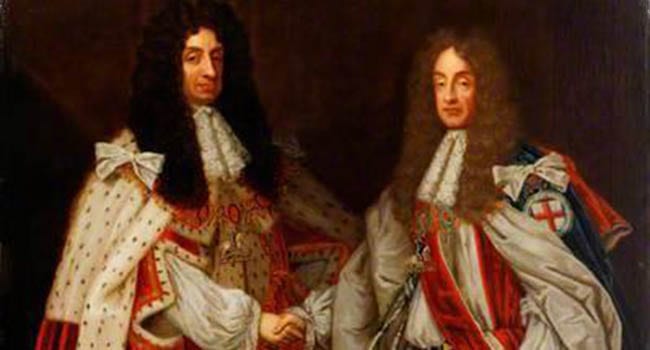 Of the world’s failed causes, one of the most enduring is the romantic tale of the House of Stuart. Who hasn’t heard of Bonnie Prince Charlie and his tragic-heroic attempt to recover the three crowns lost by his grandfather?
Of the world’s failed causes, one of the most enduring is the romantic tale of the House of Stuart. Who hasn’t heard of Bonnie Prince Charlie and his tragic-heroic attempt to recover the three crowns lost by his grandfather?
Let’s back up a bit.
The Stuarts were originally French, having crossed over from Brittany in the wake of the 11th century Norman Conquest. Going under the family name Fitzalan, they became established as a noble house in England and a branch subsequently extended its presence to Scotland.
There, they morphed into Stuarts (or Stewarts) and an alliance with the royal house solidified their position. Then, thanks to a fortuitous marriage, a Stuart inherited the Scottish throne in 1371. So far, so good.
The seeds of the family’s downfall were sewn in 1603, although it didn’t seem that way at the time. In fact, they appeared to have won the lottery.
When Elizabeth I died heirless, James Stuart – James VI of Scotland – was offered her thrones, thus also becoming James I of England and Ireland. England was much richer than Scotland and James relished his prize.
But the English were developing a fancy for domesticating their monarchs, which clashed with the Stuart view on the divine right of kings. That view was simple: if a king’s power came directly from God, it shouldn’t be circumscribed by mortal entities such as parliaments. Unfortunately, burgeoning sentiment in England was shifting in a different direction.
The situation came to a head with the next Stuart, Charles I. After a confrontation with parliament descended into civil war, Charles was beheaded in January 1649 and the monarchy abolished. However, the republican experiment didn’t quite suit the English temperament, so the monarchy was restored in 1660.
Mindful of his father’s fate, Charles II was shrewdly devious and flexible. But his brother and successor – James II – was principled and stubborn. It didn’t end well.
In addition to displaying the Stuart propensity for absolutism, James publicly converted to Catholicism. And when a male heir was born in 1688, the die was cast.
Putting up with a one-off Catholic king was tolerable, but the prospect of a Catholic dynasty was an entirely different matter. By Christmas, James was in exile in France, replaced by his Protestant daughter, Mary, and her Dutch husband, William of Orange.
James had two fundamental weaknesses: a tendency to lose his nerve at critical moments and an inability to manage the relationship between church and state.
The first loss of nerve occurred in 1688, following William’s invasion and the transfer of allegiance by a number of key English players. James fled, ending the year in France under the protection of the French king.
The second occasion happened in 1690. Intending to recover his kingdoms via Ireland, James was defeated by William at the Battle of the Boyne, after which he returned to France to regroup. Effectively, he abandoned his Irish Catholic allies, thus inspiring one Gaelic poet to dub him Seamas an Chaca (translation: James the Shit).
On the matter of religion, some historians frame James as an admirable man ahead of his time. By openly practising Catholicism and promoting Catholics to key positions, he was paving the way for non-sectarian toleration. A person’s faith wouldn’t be an impediment to full participation in public life.
Others are more skeptical. Perhaps the ostensible toleration was merely a tactic, informed by the fact that English Catholics were a distinct minority, numbering perhaps two per cent of the population and 20 per cent of the aristocracy. Maybe it was the thin end of the wedge, the first step in rolling back the Reformation and returning England to official Catholic status.
Whatever the truth of his aspirations, James was out of step with European political reality. Europe was a place where religion was taken very seriously and religious alignment between sovereign and people was the norm. It wasn’t an English idiosyncrasy.
James might have been better advised to follow the precedent of Henry of Navarre, who clinched his claim to the French throne by renouncing Calvinism in favour of Catholicism. Reputedly observing that “Paris is well worth a mass,” Henry was able to pacify his overwhelmingly Catholic country, end a civil war and enact a degree of religious toleration via the Edict of Nantes.
James, however, lacked the requisite flexibility. So the Stuarts were effectively consigned to history and Bonnie Prince Charlie couldn’t bring them back.
Troy Media columnist Pat Murphy casts a history buff’s eye at the goings-on in our world. Never cynical – well perhaps a little bit.
The views, opinions and positions expressed by columnists and contributors are the author’s alone. They do not inherently or expressly reflect the views, opinions and/or positions of our publication.

